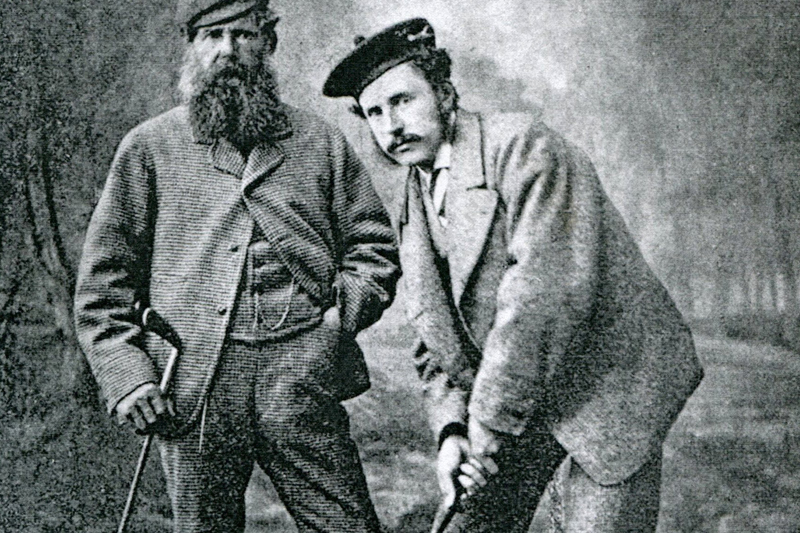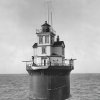Young Tom was a handsome man with curly black hair who liked to wear the latest fashions; usually a suit, tie and vest when he played golf. He stood only 5 foot 8 inches tall, but was a giant of a man who left his mark on the game forever. He was born in St. Andrews, Scotland, "The Home of Golf," and just like his father, "Old Tom," he was destined to become a legend and one of the great pioneers of the game. He was the first golf prodigy in the history of the game.
He won his first British Open at age 17, but died on Christmas Day at age 24, from what many friends said was a broken heart. But before we discuss his death; you should get to know the man and his life.
Who was young Tom?
Young Tom Morris, Jr. was born on April 20, 1851 and was the son of "Old" Tom Morris, the legendary golfer and head greenskeeper at St. Andrews Links.
During his career, Old Tom won four of the first eight British Open Championships, invented new golf clubs and perfected the new "guttie" ball or gum-center ball. Young Tom grew up and learned the game of golf at the Prestwick Golf Club where his dad got his first job as head pro and greenskeeper. Old Tom was paid a nice salary for his reputation, knowledge of the game, lessons and technical advice on how to improve the course layout at Prestwick.
This allowed Young Tom to have the best of everything and his early schooling came at the prestigious Ayr Academy for the sum of fifteen pounds per year. He studied with the sons of noblemen and rich businessmen and learned the game of golf from his father. Young Tom did not caddy or go into the club-making business like his father, but played the game daily with a passion. In 1864, at age thirteen, he defeated his father, who was the current British Open champ, in a friendly match at St. Andrews.
He then went on to win his first (professional) head-to-head match with another local youth champion. His first payday at age thirteen was five pounds, which is the equivalent of $850.00 by today's standards. At age fourteen in 1865 he played in his first British Open, but did not finish the event. The following year, he placed ninth. In 1867 he came in fourth, but in 1868 he reached golf's immortal icon status. Starting that year, he won four straight British Open Championships (1868-1872, there was no Open in 1871), all of which were played on his home course at Prestwick Golf Club.
He currently holds two records that may never be broken. The first record is that of the youngest winner, at age seventeen, and the most wins in a row (four) both of which still stand uncontested to this day. Young Tom also has the honor of being the first golfer to ever hit a hole in one during tournament play. In his first British Open in 1868 he played a mid-iron from the 166 yard eighth hole and scored an ace.
During play in the 1870 Open, he started the tournament with a three or double albatross (eagle) on a par six, 578 yard hole using hickory-shafted clubs and a "guttie" ball.
In September of 1875, young Tom and his father were on the sixteenth green of a tournament at North Berwick, Scotland, when a telegram was delivered to him. His heart sank when he read that his wife Margaret was in a difficult labor and his presence was urgently needed. Tom and his father finished the tournament (with young Tom winning) and rushed home by ferry across the Firth of Forth. When Tom arrived, he found his wife and baby both dead from childbirth complications.
Tom never recovered from the loss and died brokenhearted on Christmas Day. Friends and family were told it was from a heart attack, but they knew he couldn't go on without family.
19th Hole trivia
- In his last two British Opens, (1873, 1874) Tom finished tied for third and finished second respectively.
- Tom was inducted into the World Golf Hall of Fame in 1975.
- In a Golf Magazine survey, Young Tom was ranked 14th best player overall; his father Old Tom, 19th.
- Prestwick Golf Course was a twelve-hole course. (18 holes was not a standard.)
- During his career, Morris used a rut iron (an iron made to hit out of cart-wheel ruts on the course), but became the first player to use it as a sand wedge from the bunkers and rough.



















































